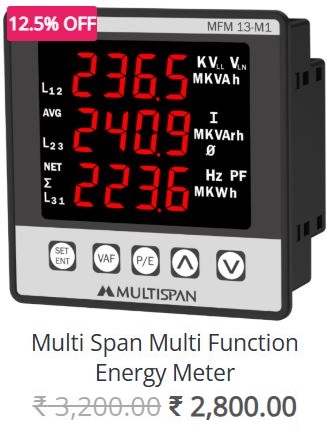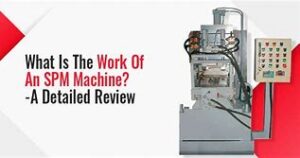In the world of industrial automation, Special Purpose Machines (SPMs) have become crucial for meeting the diverse and complex needs of manufacturing processes. These machines are designed and built to perform specific tasks, offering custom solutions that increase efficiency, precision, and speed across various industries. The evolution of SPM automation has been marked by significant advancements, especially in programmable logic controllers (PLCs) and control systems like those from leading brands such as Delta and Siemens. Let’s explore the trends and innovations shaping the future of SPM automation.
The Rise of Special Purpose Machines
SPMs are custom-designed equipment tailored to perform a particular task that cannot be efficiently handled by general-purpose machinery. From automated assembly lines to specialized testing and inspection systems, these machines are integral to industries like automotive, electronics, pharmaceuticals, and packaging. The need for higher production rates, consistent quality, and cost-effective operations has driven the continuous evolution of SPM automation.
The Role of PLCs in SPM Automation
At the heart of modern SPMs lies the Programmable Logic Controller (PLC), which is the brain behind most automated processes. PLCs are rugged, reliable, and capable of controlling complex machines and systems. The integration of PLCs into SPMs has revolutionized the way these machines operate, enabling real-time control, diagnostics, and process optimization.
Siemens PLCs are well-known for their flexibility and scalability in handling a wide variety of applications. Their S7 series is renowned for its robustness and adaptability in industrial automation, offering precise control over complex SPM operations. Siemens’ comprehensive range of PLCs provides not just control, but the ability to integrate seamlessly with various sensors, actuators, and peripherals, further enhancing SPM performance.
Delta Electronics has also made significant strides in the PLC market with its DVP series PLCs. These systems offer high-speed processing, a wide range of I/O modules, and a compact design ideal for special-purpose machines that require compact yet high-performance control solutions. Delta’s focus on automation solutions for a variety of industries makes it an excellent choice for SPM builders looking for reliable, cost-effective solutions.
Innovations in SPM Automation
As industrial automation continues to evolve, SPMs are becoming more sophisticated, incorporating advanced technologies like AI, machine learning, and the Internet of Things (IoT). Here are some of the key innovations driving the evolution of SPM automation:
1. AI and Machine Learning Integration
AI and machine learning algorithms are beginning to play a crucial role in the optimization of SPMs. By analyzing vast amounts of data collected from sensors, machines can now make decisions on-the-fly to adjust processes in real-time. This enables predictive maintenance, where the system can predict potential failures and alert operators before issues arise, reducing downtime and increasing productivity.
2. IoT Connectivity
With IoT-enabled devices, SPMs can now communicate with other machines and systems in real-time. This connectivity allows manufacturers to gather insights from their operations, monitor machine performance remotely, and ensure that all systems are working efficiently. IoT-based SPMs are an essential part of the Industry 4.0 revolution, enabling manufacturers to move towards smart factories with fully interconnected production lines.
3. Energy Efficiency
Energy consumption is a significant concern in industrial operations. New trends in SPM automation focus on energy efficiency, ensuring that machines are optimized to use less energy while maintaining high performance. Technologies like variable frequency drives (VFDs) and energy-efficient motors are becoming standard components in modern SPMs, reducing operational costs and contributing to sustainability goals.
4. Modular and Scalable Systems
As industries demand more flexibility and customization, SPMs are becoming more modular and scalable. These systems can be easily adapted or expanded to meet the specific needs of a manufacturing process. By adopting modular designs, manufacturers can scale their production capabilities without completely overhauling their existing machinery, making SPMs more cost-effective and versatile.
5. Human-Machine Interface (HMI) Improvements
User interfaces have come a long way in improving the ease of operation and monitoring of SPMs. Modern HMIs are intuitive, touchscreen-based, and highly interactive, providing real-time data and control in a user-friendly format. These advancements in HMI technology make it easier for operators to monitor complex systems and make adjustments quickly, ensuring that operations run smoothly.
6. Robotics Integration
Robotics has also played a significant role in the evolution of SPMs. Integrating robotic arms or autonomous mobile robots (AMRs) into special-purpose machines increases automation levels and enhances precision. Robots can perform repetitive tasks with high accuracy and speed, reducing human labor requirements while improving product quality.
The Future of SPM Automation
The future of SPM automation looks promising, with continuous advancements in technology and control systems. Some key trends to watch for include:
- Increased adoption of edge computing to process data closer to the source for faster decision-making.
- Enhanced AI-driven process optimization, where systems self-optimize and adapt based on real-time data.
- Collaborative robots (cobots) working alongside human operators, increasing productivity and safety.
- 5G connectivity, enabling ultra-fast communication between machines for real-time data exchange and improved synchronization across production lines.
Conclusion
SPM automation has come a long way, evolving from simple control systems to sophisticated, AI-driven machines. With companies like Siemens and Delta leading the way in PLC technology, the future of SPMs is brighter than ever. These innovations will continue to shape industries, driving higher efficiency, lower costs, and better-quality products. For manufacturers looking to stay competitive, embracing these advancements in automation is essential. As automation technology progresses, SPMs will become more intelligent, connected, and flexible, further transforming the industrial landscape.
By staying ahead of these trends and leveraging the power of PLCs and automation technologies, businesses can ensure that they are well-equipped to meet the challenges and opportunities of the future.
















